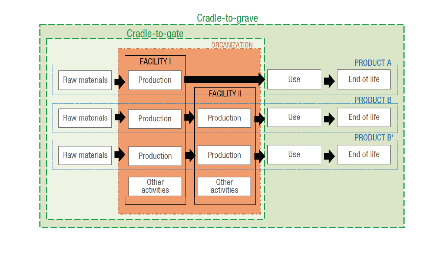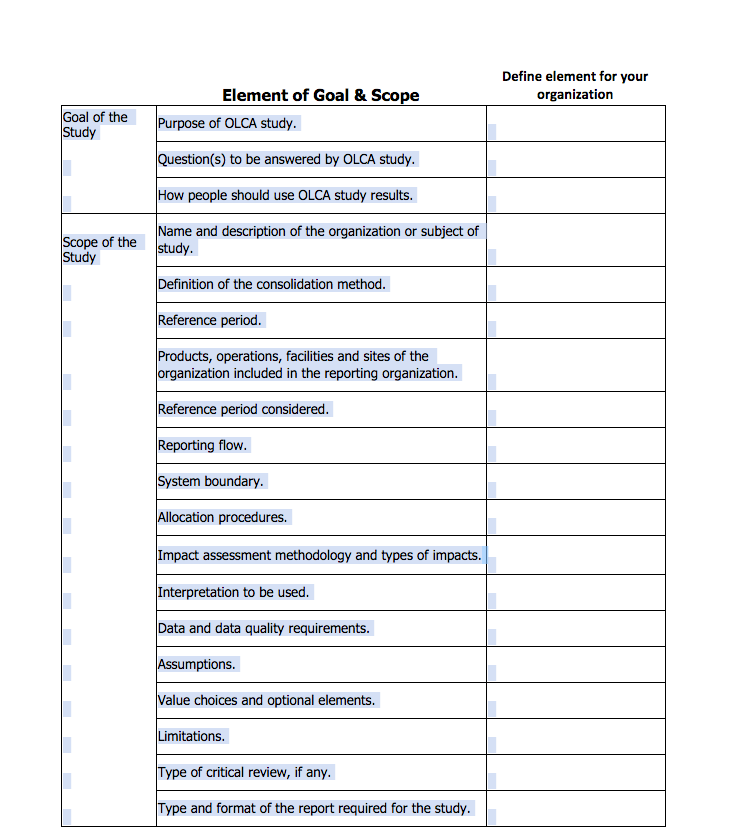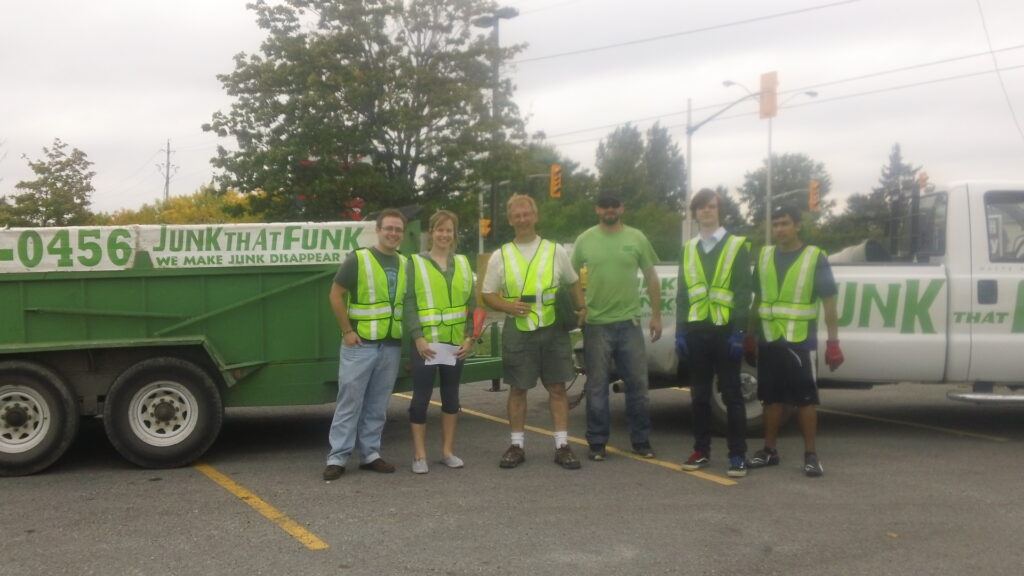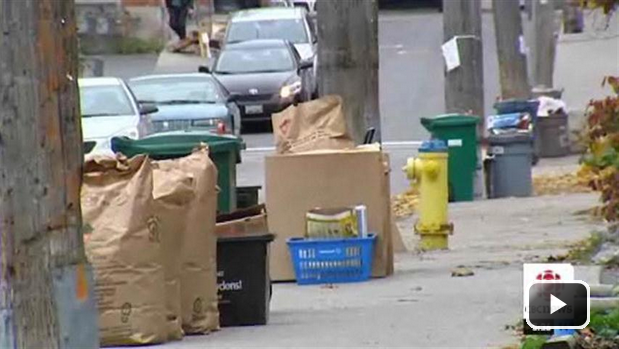Phase in environmental performance evaluation…
Since kicking off on September 25th, the most important thing we’ve learned from reading the olcah polcah guidance is that an environmental performance evaluation is done over four phases of work. Knowing these four phases really gave us a common understanding about the work ahead in the UN road test. Here are our notes on the work to be done in each phase.
You start with the Goal & Scope Phase to plan out your environmental performance evaluation. We are currently doing this phase, and are about to hand in the first draft of our Goal & Scope document to the UNEP/SETAC Life Cycle Initiative. The template we are using to plan this submission is included at the end of this blog post. It mainly asks questions to document the work to be done in the following three phases.
 After the Goal & Scope, there is the Inventory Analysis Phase. Here data is collected data about the energy and material processing activities involved in our organization’s product portfolio. The UNEP/SETAC guidance recommends using a chart, like the one shown to the left here, to demark the extent of your organization’s operations, product value chains, and their interrelationships. The resulting data is called Life Cycle Inventory (LCI) data.
After the Goal & Scope, there is the Inventory Analysis Phase. Here data is collected data about the energy and material processing activities involved in our organization’s product portfolio. The UNEP/SETAC guidance recommends using a chart, like the one shown to the left here, to demark the extent of your organization’s operations, product value chains, and their interrelationships. The resulting data is called Life Cycle Inventory (LCI) data.
Then, there is the Impact Assessment Phase where you translate your LCI data using indexes that predict their impact on different areas of the environment. The UNEP/SETAC guidance recommends doing this with an existing impact assessment method. We are currently planning to use a world leading impact assessment method developed in Canada called IMPACT WORLD+, which includes a number of categories to protect beyond climate change (eg. global warming), including;
- Global warming (kg CO2 eq)
- Fossil energy use (MJ deprived)
- Mineral resources use (kg deprived)
- Water use (m3 deprived)
- Terrestrial acidification (kg SO2 eq)
- Aquatic eutrophication (kg PO4– eq)
- Marine eutrophication (kg N eq)
- Aquatic ecotoxicity (CTUe)
- Respiratory inorganics (kg PM2.5 eq)
- Respiratory organics (kg NMVOC eq)
- Toxicity cancer (CTUh)
- Toxicity non-cancer (CTUh)
- Ionizing radiation (Bq C-14 eq)
- Ozone Layer Depletion (kg CFC-11 eq)
The Interpretation Phase – is the final phase of the environmental performance evaluation. This step is mainly about reviewing the study to make sure it’s been done properly (e.g. as outlined in the Goal & Scope Phase). At this part in the UNEP/SETAC guidance, it says you can start making conclusions about your organization’s environmental performance.
With the four phase workplan in mind, it seems like doing the olcah polcah is all about planning, collecting, translating and reviewing data. This is the phased method outlined by the UNEP/SETAC’s guidance to complete an environmental performance evaluation of an organization.
As we move along with doing the olcah polcah at Junk That Funk, the UNEP/SETAC Life Cycle Initiative have asked us to turn around a draft from our Goal and Scope Phase.
Does your organization have what it takes to do the olcah polcah? Want to try doing a Goal & Scope of your organization?
Fill out the Goal & Scope template below and we’ll give you a 50$ credit towards your next junk removal.



